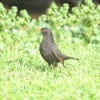 By Jim Stevenson
By Jim Stevenson
I’d like the recognize someone who has really contributed to local ornithology, David Hanson. Dave burst on the scene relatively recently but found and photographed a Double-toothed Kite at High Island, accepted as the first record for the Continent! Dave also photographs other excellent records, such as an apparent Rusty Blackbird very recently on the Kenai Peninsula! He also helps tremendously with FeatherFest and even took a visiting couple from New Zealand birding down the Coast. He even sends out his bird pictures to struggling bird photographers like me! Kudos to Dave for all he does!
Next, we need to advertise a four-day photo shoot 2-5 October (fly in on the 1st). We’ll shoot migrant songbirds and shorebirds, but concentrate on the raptor migration. It’s $600 and covers guide and transportation. Let me know if you’re interested, and ask questions.
Today’s gallery is on the introduced land birds on New Zealand, or alternatively, the birds of Mort Voller’s backyard when he was a child. Hope yall enjoy them!
P.S. Barbara and I have just finished the 2015 Calendar, e-mailing back and forth, half a world away. In order to do this, we had to use birds that make long flights. A Wandering Albatross is on the cover!
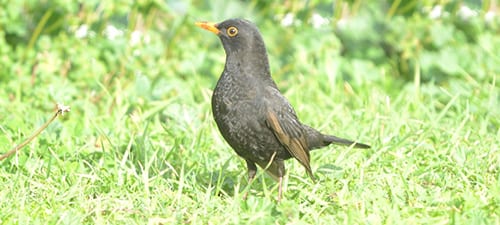
This thrush (!) is a male Blackbird, a common species in many peoples’ yards. They will
remind you of a black robin, perhaps a bit small. This individual was doing a real job on
worms, and you can see the mess the earthworm’s (12) hearts pumped out. This seems to
be a first-year male, as evidenced by the brownish primaries.
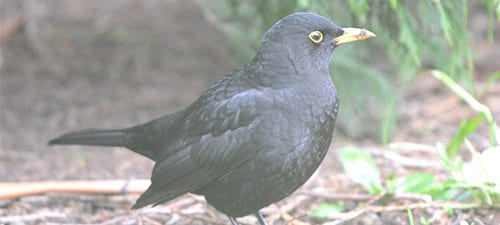
Blackbirds def initely have a problem with tacky bills.
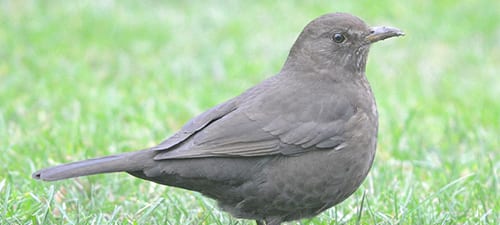
Female Robins are more brown than black, and probably blend on the nest better. She has
no cleaner beak than the males, tho, but her brown plumage might hide the rime better! I
am amazed how much this bird looks like a plump female Brewer’s Blackbird, found all
over the American West.
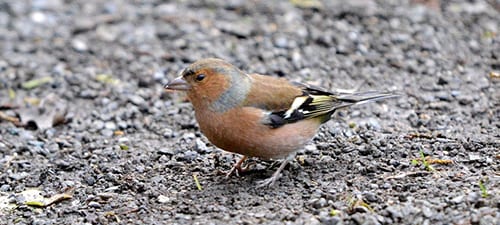
Chaffinch are beautiful seed-eaters found over much of NZ, even the islands toward the
Antarctic. They are at home in the higher mountains as well, and often form large flocks
of sexually segregated birds. Like many other introduced species, these are all over the
cities, perhaps the reason the Brits brought them to NZ.
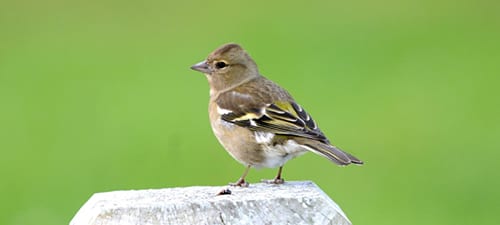
Here’s the female Chaffinch.
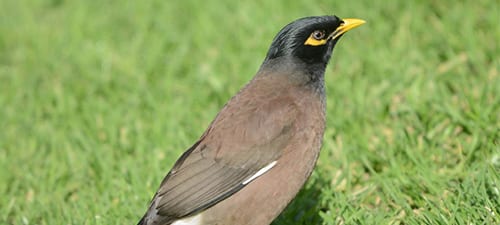
Common Mynas are spread over much of Eurasia (and Miami) and are firmly established
in NZ and eastern Australia. They are chunky like their starling relatives and also adept at
imitating various bird calls. They work the open ground in yards and parks and are tame
and abiding.
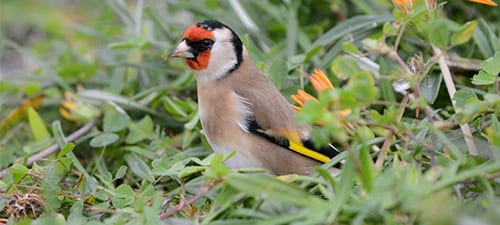
European Goldfinches, which have been introduced to certain parts of the US are very
common in NZ’s yards and parks. Their head kinda ruins any hopes of camouflage, but
the resemblance too Red-faced Warblers is interesting, though it means nothing. Or the
cormorant, for that matter! I saw flocks of them all along various seashores in NZ.
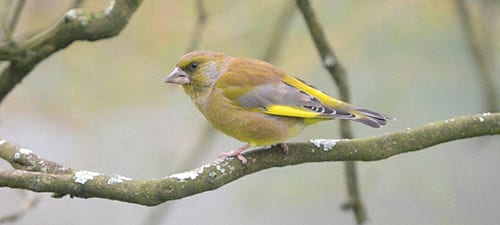
A small but robust finch that’s less conspicuous than others like Chaffinches is the quiet
Greenfinch. They have not been as successful a colonizer as many species and are less
common on islands as most others. They do have lovely flash colors in their wings and
when singing, are pleasant.
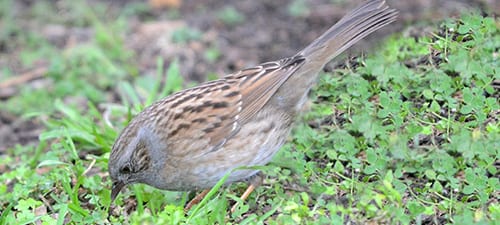
This is the Hedge Sparrow, amazingly, my last bird family to have beheld on Earth. They
look a bit like a grayish Swamp Sparrow, but just notice the thinner bill than New World
sparrows. They are in the family of accentors and it took this introduced bird to bring it to
NZ. They are a tame and abiding species, in yards and parks close to the public.
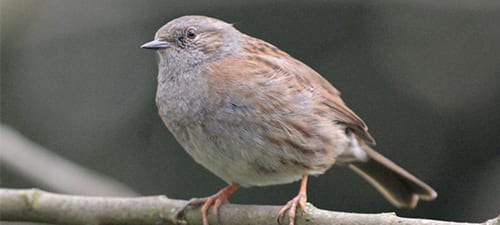
Probably getting a nose bleed from being a full six feet off the ground, our hero wishes to
show off his non-sparrow bill of an accentor. These are the colors of an animal that wants
to play in dirt. Hedge Sparrows also aren’t terribly vocal but do have a quiet collection of
chips reminiscent of New World sparrows working on the ground.
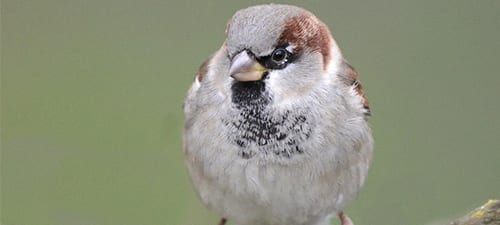
Of course, House Sparrows were introduced to NZ, just as it was all over the New World
of the Americas. Their family is, in fact, the nominate of the songbirds, with their genus
name Passer being the root of the songbird order, Passeriformes. This appears to be a
young male, judging from the less-than-complete black bib.
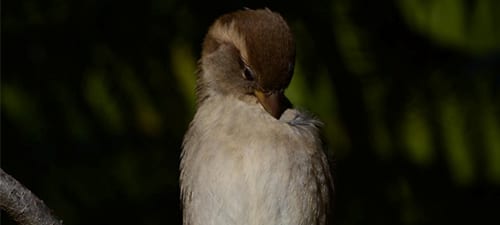
And here’s the female House Sparrow, called the English Sparrow before her Majesty
sent it to the four corners of the globe. Birds have quite a selection of mites, with some
having better bills for dealing with them than others. These are closely related to the
Tree Sparrows in St. Louis and surrounding areas.
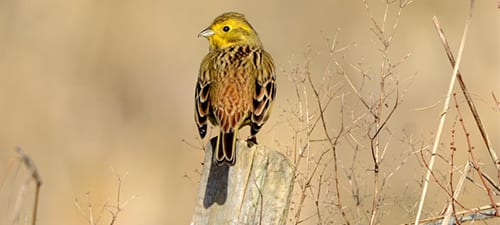
The Yellowhammer is one of the most colorful birds in a country without many bright
species. They are an openland species, often seen along the coast and open fields. Is that
garnet and gold I see? Curiously, the name “yellowhammer” is a nickname (vernacular)
for the flicker, the State Bird of Alabama.
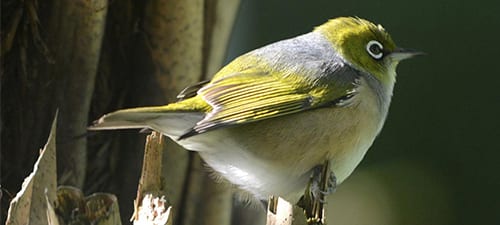
He White-eye (or Silver-eye) is a small insectivore that’s common in New Zealand and a
decent-looking little bird. Their white eyering, color and build bring to mind kinglets in
our winter days. The family of White-eyes is widely distributed over the Pacific Basin
but not in the New World (Americas).
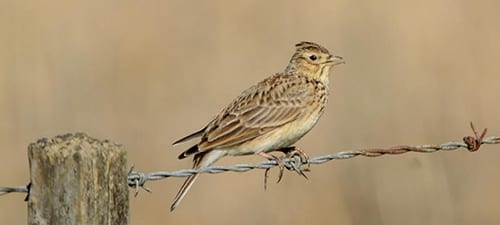
The Skylark is related to our Horned Lark, both in the happy family Alaudidae, although
someone forgot to separate the Sky and Lark. Oops. As you can see from the bill, they
have a combo beak compromised for insects and seeds, halfway between conical and
thin. Their color is obvious great for vanishing in fields and the hind claws are as long as
any hallux I’ve seen.
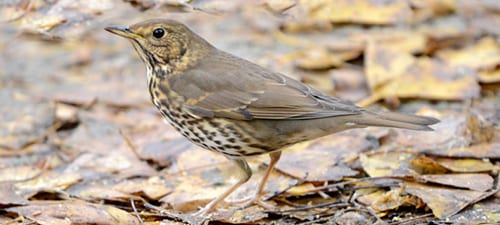
The Song Thrush is well named, issuing lovely melodies reverberating up and down the
streets of most rural neighborhoods. This species could easily be called a Swainson’s
Thrush – although it might be a little too spotted on the belly (and maybe needs a better
eyering). It is curiously not in the familiar genus of transient thrushes we get, but rather
Turdus, that of our robin. Go figger.

 Posted in
Posted in 























